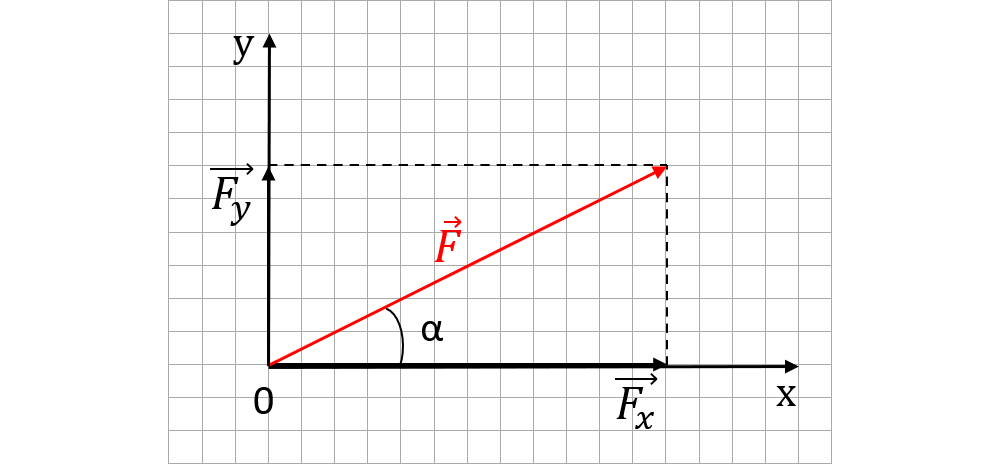To find the components of a vector, it is good first to remember that the component (the so-called scalar component) is a tick mark on the axis, not a vector itself. This allows you to think of vector components as being positive or negative. If you use "vector components", vectors that point along the x or y axes (like those shown in the answer by Relativisticcucumber), then it is confusing how you incorporate the idea that they are "negative" (vectors/arrows are neither negative or positive, they just point).
So, for your hypothetical vector that points to $(3, -3)$, those are exactly its components:
$$
\vec{V} = V_x \; \hat{\imath} + V_y \; \hat{\jmath} = 3 \hat{\imath} + (-3) \hat{\jmath} = (3, -3)
$$
If you draw such an arrow on a page and then choose a coordinate axis such that your arrow points "45 degrees North of East", then those are the components you will get for that arrow. If you didn't already know the component, you would find it like this. (i) Draw a line from the tip of the arrow back to the $x$ axis, such that it is perpendicular to the $x$ axis. (ii) Where you arrive is a tick mark on the negative $x$ axis, so the component is negative. (iii) To find its value, use the right triangle made by the arrow (the hypotenuse of the triangle is the magnitude of the vector) and the perpendicular line you dropped to the axis. The length of a side of that triangle will always be positive (e.g., for you $\ell = |\vec{V}| \cos 45$), but you see from your original picture of the arrow on the coordinate system that the component is negative, so (iv) all together:
$$
V_x = - \ell = - | \vec{V} | \cos 45
$$
Without solving the problem you are asking about, we could answer a similar question. Say I have three vectors --- $\vec{A}$, $\vec{B}$, and $\vec{C}$ --- that sum to zero and also form the sides of a 3-4-5 right triangle, with $\vec{A}$ having $|\vec{A}| = 4$ and pointing horizontally (along the positive $x$ axis), $\vec{B}$ (the hypoteneuse) pointing into the third quadrant, and $\vec{C}$ pointing vertically downward (along the negative $y$ axis). Then you can use the method above to see that:
$$
\begin{align}
\vec{A} &= (A_x, A_y) = (4, 0)\\
\vec{B} &= (B_x, B_y) = (-5 \cos \theta, + 5 \sin \theta)\\
\vec{C} &= (C_x, C_y) = (0, -3)\\
\end{align}
$$
where, for the 3-4-5 right triangle, that angle satisfies:
$$
\sin \theta = \frac{3}{5} \quad \text{and} \quad \cos \theta = \frac{4}{5}
$$
so we find:
$$
\vec{A} + \vec{B} + \vec{C} = (4,0) + \left( -5 \cdot \frac{4}{5}, 5 \cdot \frac{3}{5} \right) + (0, -3) = (0, 0)
$$

